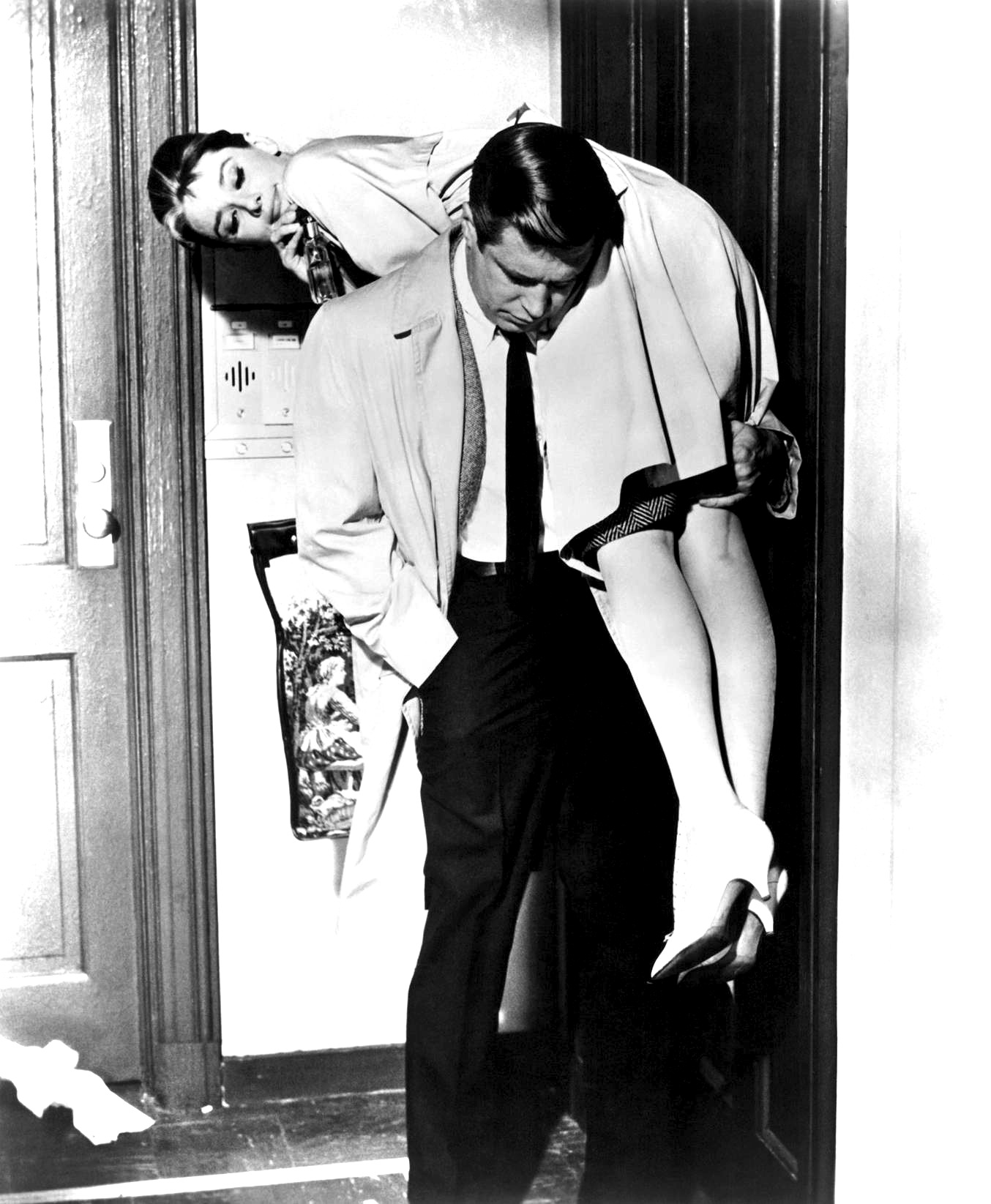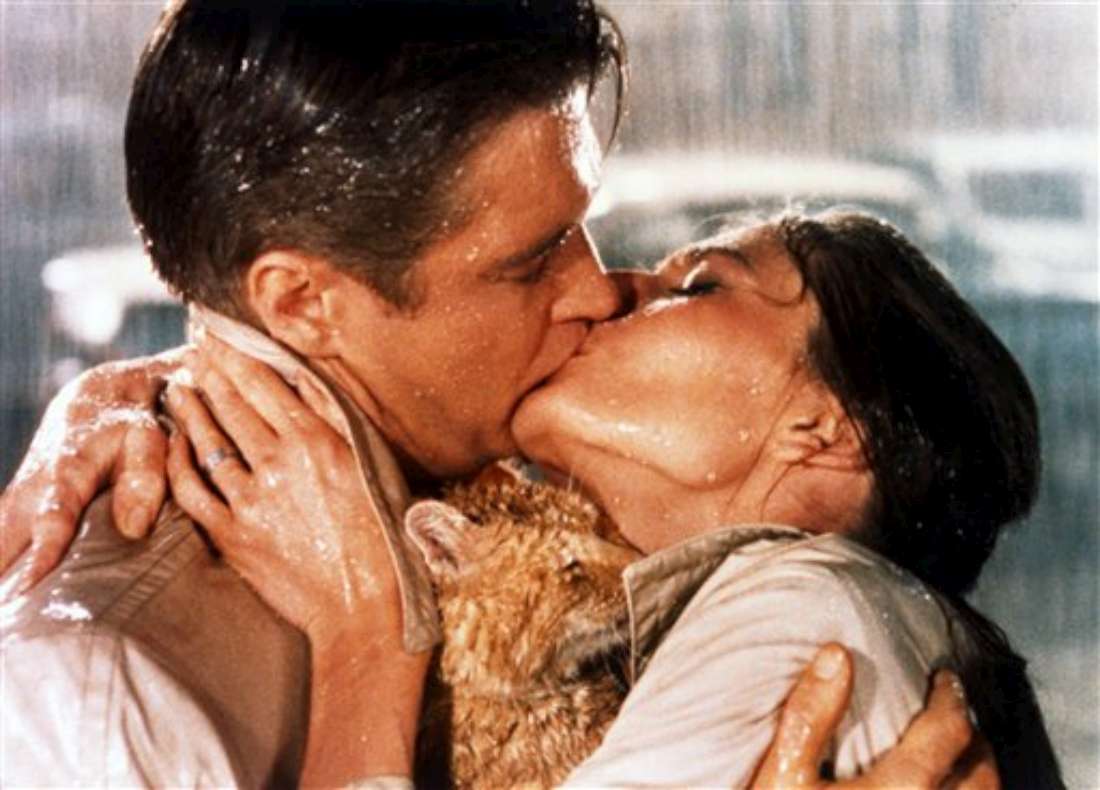
A recent Onion headline reads as follows: “College-Aged Female Finds Unlikely Kindred Spirit in Audrey Hepburn.” The article (which is about a girl named Emily and set in Charlottesville…) adds that, “while no one would ever suspect it, [Emily] has a Breakfast at Tiffany’s poster hanging in her dorm room.” While I swear that I am not the basis for the fictional Emily of Charlottesville quoted in this article, at least two different posters of Audrey Hepburn have adorned my walls before, and I have watched Breakfast at Tiffany’s more times than I can count. What is the big deal with Audrey Hepburn anyways? What is it about the doe-eyed, pencil thin golden-age-of-Hollywood starlet that continues to inspire dorm decoration nationwide and fashion collections every season?
 Most females would say similar things: she’s beautiful in a classy, sophisticated way, she’s smart, she’s quirky and elegant in equal measure, she has impeccable fashion, etc. I’d say the majority of her timeless appeal comes from the characters she played, especially the iconic, air-headed yet tragic Holly Golightly. Holly is fun and spontaneous, she’s gorgeous and impossibly thin (and skinniness is next to godliness, after all), and she can play “Moon River” on the guitar and pull off a towel headscarf at the same time. A little while ago I talked to a friend right after she’d watched Breakfast at Tiffany’s for the first time. She said that she didn’t understand why every girl is so enamored with Holly Golightly when she’s completely out of touch with reality and actually pretty dumb. My wiser-than-most friend concluded: “I found the movie tragic. To me it was about how screwed up her life is.”
Most females would say similar things: she’s beautiful in a classy, sophisticated way, she’s smart, she’s quirky and elegant in equal measure, she has impeccable fashion, etc. I’d say the majority of her timeless appeal comes from the characters she played, especially the iconic, air-headed yet tragic Holly Golightly. Holly is fun and spontaneous, she’s gorgeous and impossibly thin (and skinniness is next to godliness, after all), and she can play “Moon River” on the guitar and pull off a towel headscarf at the same time. A little while ago I talked to a friend right after she’d watched Breakfast at Tiffany’s for the first time. She said that she didn’t understand why every girl is so enamored with Holly Golightly when she’s completely out of touch with reality and actually pretty dumb. My wiser-than-most friend concluded: “I found the movie tragic. To me it was about how screwed up her life is.”
But it’s her helpless messiness that makes her romantic—that makes her eyes just as lost as they are starry and betray every look as a silent plea for help. It’s endearing when she leaves a shoe in the refrigerator or wakes Mr. Yunioshi up yet again because she lost her key. She’s a beautiful mess, and that’s exactly the allure.
Holly Golightly is incomplete until the handsome and sympathetic Paul Varjak comes along, finds her shoes, and saves her from herself. And yet, the Holly Golightly model of dependence is much more appealing than what we often see today. I read a Jezebel piece the other day called “Behind the Cultural Imperative for Women to be Sexy And Cute.” Nearly every female archetypal character is centered on dependence—on the need for a man. To be cute is to be childlike and helpless, in need of both guidance and protection. To be sexy is to be the object of another’s desire—without that desire there is no complete picture of a person. And compared to a baby-talking Paris Hilton, who wouldn’t pick a broken but elegant New York socialite as a sort of role model?
[youtube=https://www.youtube.com/watch?v=ZqB52bdaVTE&w=600]
There’s a sweet surrender to identifying with a beautiful mess like Holly Golightly because most of us are hyper-aware of our inability to keep it together. The female need for a savior is often misattributed to the need for a male hero to ride in on horseback, sweep the woman off her feet, and make her right by loving her. And so, when being a hopeless screw-up becomes equated with romance it’s hard to resist the appeal of a damsel in distress. The season finale of Girls played off of this knight-in-shining-armor complex note for note—both Hannah and Marnie were at their absolute messiest, and (while I bet they’re going to undo the whole man-to-the-rescue thing in season three) it was impossible not to smile while Adam ran, heroic and shirtless, through the streets of Brooklyn as the romantic string music built.
 That episode, however, made me feel a very modern, third-wave-feminist guilt for my flushed excitement as Adam came to the rescue because it’s weak to admit to the desire for a man, especially one in any kind of saving role. Which I know may be a little ironic for someone who (theoretically) believes that all of us are in need of saving, men and women alike, and that if we were to insist on rescue on our terms it wouldn’t really be much of a rescue. Still, it was pretty jolting, especially for that show–which was probably the point. But I digress.
That episode, however, made me feel a very modern, third-wave-feminist guilt for my flushed excitement as Adam came to the rescue because it’s weak to admit to the desire for a man, especially one in any kind of saving role. Which I know may be a little ironic for someone who (theoretically) believes that all of us are in need of saving, men and women alike, and that if we were to insist on rescue on our terms it wouldn’t really be much of a rescue. Still, it was pretty jolting, especially for that show–which was probably the point. But I digress.
I wonder if, in some ways, this might be an area where these (often restrictive) societal norms actually make it easier for women—as our Argentinean fiancés hang us out to dry and we lose our cat, Cat—to recognize our need for a savior. At least as opposed to men who are pressured to be the stoic aggressor/winner. The analogy isn’t a very tidy one, though. You see, the necessary counterpart to messiness in the Holly Golightly equation is beauty; because we love what’s beautiful, Holly is a perfect recipient of a human love—unrealistically so. She “merits” her salvation, if you will. The rest of us are not always so lucky (or charming). We have physical flaws and emotional baggage that make receiving love extremely hard, to say nothing of saving love. Some of us even prefer to go down with our own sinking ships. Whatever the case, one thing is certain: we need a whole lot more than a blue-eyed Paul Varjak to save us.
[youtube=https://www.youtube.com/watch?v=uirBWk-qd9A&w=600]
Look out below! F-bomb warning!
[youtube=https://www.youtube.com/watch?v=94vEy2PXr24&w=600]

COMMENTS
Leave a Reply












